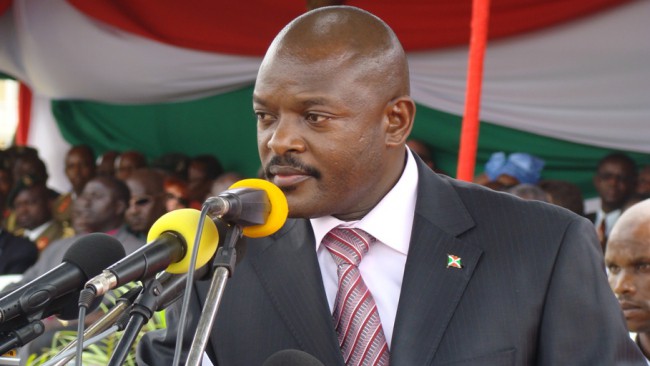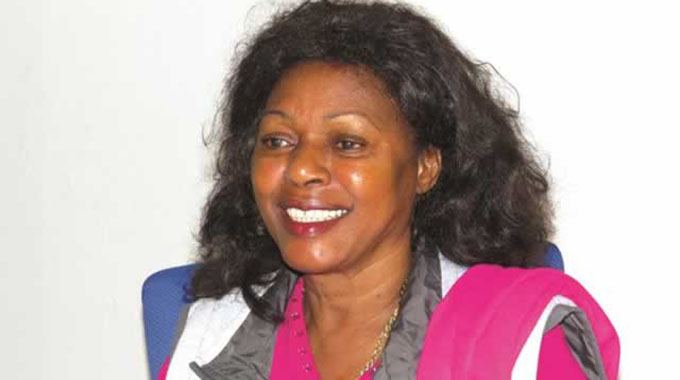Women’s fortunes to be revived soon
Ruth Butaumocho Gender Editor
With all economic indicators pointing southwards – falling commodity prices and an impending drought Zimbabweans are set for yet another tough year ahead. Even during the best of times Zimbabwean women have been left to bear the brunt of abject poverty. The national budget statement announced by Minister of Finance Honourable Patrick Chinamasa a fortnight ago clearly shows that the cake is getting smaller as Government revenues continue to decline and by virtue of their disadvantaged position in society women may have made yet another miss at economic empowerment and inclusion.
According to the Zimbabwe Multiple Indicator Cluster Survey, MICS that was carried out in 2014 by the Zimbabwe National Statistics Agency, (ZIMSTAT) more than 60 percent of women in Zimbabwe are said to be living in poverty.
With little fiscal space to manoeuvre Minister Chinamasa, in presenting his budget said women’s waning fortunes would soon be revived because of their crucial role in the economic matrix of Zimbabwe.
“Notwithstanding resource constraints, the 2016 Budget prioritises women empowerment projects and programmes, especially in view of the fact that 52percent of (the) total population are women”
“Treasury was guided by the policy requirement for line ministries to reflect gender mainstreaming in their budgets, through gender specific budget lines”
Minister Chinamasa’s announcement was met with enthusiasm by women across social and political divide, who were eager to make a comeback in the economic fold after the 2015 budget failed to address their economic aspirations.
However, their situation in 2016 is more precarious than before. It will be more of the same, if not worse, after Treasury allocated measly amounts to ministries directly related to women’s economic empowerment.
For instance, the Ministry of Small and Medium Enterprises and Cooperative Development was allocated $6 million, which is 0,2 percent of the total budget, while the Women Affairs, Gender and Community Development got $13 million, with $5 million expected to be channelled towards the setting up of the Women’s Bank.
According to the Finance Minister, it is envisaged that once the bank is operational, it will fund various planned women empowerment projects in agriculture, agro-processing, tourism construction, mining and other value adding activities.
Although Minister Chinamasa highlighted that Treasury was guided by the policy requirement for line Ministries to reflect gender mainstreaming in ministerial budgets, when allocating fund, the votes are a far cry of the financial injections needed to empower women and the youth.
Presenting a paper at the post budget seminar for Parliamentarians in Harare this week, economist Dr Godfrey Kanyenze said women were left out of the national budget, despite their potential to create employment, because of their numerical significance in the small to medium enterprises.
“Empowerment of women in 2015 was hampered by lack of financial resources. Sadly the same could happen again next year after it emerged that allocations that were made towards women empowerment are not in tandem with reality on the ground.
“The budget should be able to speak to the issue of poverty, which in this affect women, who constitute 52 percent of the population. “For instance the Ministry of Small and Medium Enterprises and Cooperative Development which caters for their (women) economic aspiration only got 0,2 percent of the total budget allocation.
Dr Kanyenze said it was sad that Government and the private sector was failing to create enabling structures to ensure that constraints affecting women and youth were catered for considering that they are the most bankable group of people.
“Enough budget allocation should be given to women and youth so that the nation can address poverty levels among the group. After all it is said that poverty has the face of a woman,” he said.
Member of Parliament for Harare West, MDC T’s Jessie Majome, reiterated Dr Kanyenze’s assertion, saying that the recently announced National Budget for 2016 was not gender neutral.
“There have not been any upward projections of investment portfolios that target women’s economic empowerment so that their livelihoods can change for the better, than what it is at the moment.
“Society would need to question the extent to which investments are made to ensure that women are empowered through various empowerment vehicles, and cannot continue to be bystanders in such crucial matters that affect their livelihood,” she said.
Hon Majome blamed institutional weaknesses for the continued exclusion of women and their participation in the economic sector, saying line ministries were mainstreaming gender on ad hoc basis, when it should be done holistically and continuously.
“There is need for institutional strengthening and programming of gender issues. Once that happens, it then becomes easy to address gender gaps, and the results will cascade to all departments, and that adherence would be reflected even in the national budget,” she said.
She added that even ministries that offer social services will not alleviate the suffering of women in accessing health and social services after they received inadequate allocations. Even the ordinary woman feels there is nothing for her in the 2016 National Budget.
“I have not gone through the national budget, but I am told that the duty free rebate has since been reduced to $200, up from $300. So my regular trips to South Africa and Zambia, will not yield much,” said 33 year old Agnes Chitando, a cross border, while casting a disconsolate figure in the capital’s Africa Unity Square, soon after budget announcement.
The history of women in Zimbabwe has hitherto been one associated with poverty.
Member of Parliament for Binga North, Honourable Dubeko Prince Sibanda said in the absence of adequate budgetary requirement to meet women’s needs, Government could still economically empower women, by creating local markets for the women to supply their produces, rather than import, as was the case currently.
Ministry of Finance since 2008 has been issuing Budget Call Circulars requiring respective ministries to budget with a gender perspective. The 2016 Circular required line Ministries to produce gender budget statements, but that has not been getting due attention if recent budget pronouncements are anything to go by
The overall goal of gender budgeting is to reduce inequalities and to promote gender sensitive development policies for poverty reduction and improvement of the welfare of women and men, boys and girls through national budget.
This is done to achieve gender-sensitive budget that address the needs of all people equitable, while taking into consideration the special needs of people with disabilities and the elderly. Just before the announcement of the budget, civic stakeholders carried out national pre-budget consultations with women representation from all the provinces.
The process that was led by the Zimbabwe Women’s Resources Centre and Network, ZWRCN a leading advocacy organization for gender budgets in Zimbabwe received overwhelming response from different economic cluster groups.
Sadly the pronouncement from the National Budget 2016 is not reflective of all the due processes that took place to ensure that the budget would be gender responsive.
ZWRCN director, Ms Pamela Mhlanga noted with concern that the 2016 national budget does not have gender specific budget lines to make a positive impact on women, while addressing gender gaps.
“In his budget statement, Minister of Finance Hon Patrick Chinamasa in his own words said women are key economic actors. But his statement and what is in the national budget does not tally.
“There are serious deficiencies which need to be addressed so that women can be economically empowered,” she said. She added that there was need to adequately resource programmes on gender based violence, as one of the important measures in increasing production in all sectors.
“A woman who is free from gender based violence is productive and can contribute immensely to the economy, than someone who has abused daily. If implemented successfully gender responsive budgeting will promote accountability, equality, transparency and it makes women’s work economically visible. Gender responsive budget is not a new phenomenon, but was pioneered in Australia in 1994, with a federal government assessment of the budget on the impact of women.
Interest in gender-responsive budget analysis, by both governments and NGO’s, accelerated following the Fourth World Conference in Women in Beijing, 1995. The first initiative was launched in South Africa in 1995 by a group of women’s non-governmental organization and a parliamentary joint committee. This was quickly followed by similar initiatives in Switzerland, Uganda, Tanzania, Moroccco and Zimbabwe.
Morocco is one country that has a long history of gender responsive budgeting work with sustained, high-level political will to address gender equality. Since the adoption of a new finance law in January 2014, the needs of women and girls are increasingly being reflected in how governments spend and the gender priorities are integrated throughout the budgeting process.







Comments